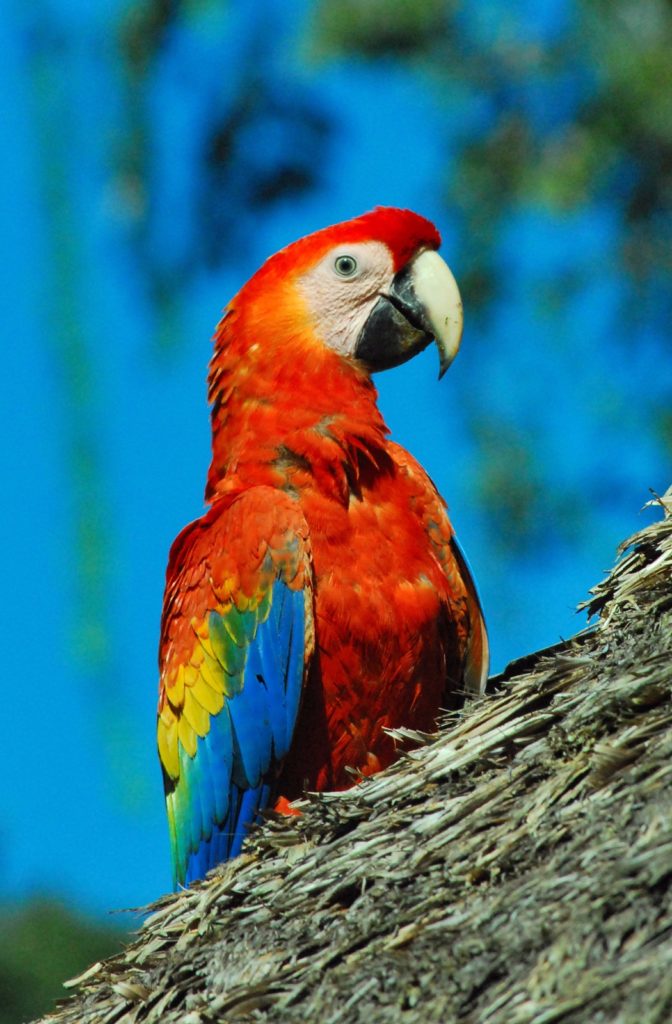
Picture creidts: Liz VIllanuea Paipay
Modern, next-generation gene sequencing technology makes it possible to sequence the DNA in the entire genome of any bird relatively quickly and cheaply. Once the genome is completely sequenced and assembled it provides scientists with a guidebook to the biology of the species. We chose to sequence the genome of a wild-caught female Scarlet macaw (Ara macao). We chose a wild-caught bird because its genes would reflect those in a wild population rather than a captive-bred bird in which we had no assurance that its parents were unrelated. We chose a female because in birds, that is the sex with two different sex chromosomes (Z and W), and we could therefore determine the gene sequences in both of them. We chose a Scarlet macaw since that is a species we have been studying in the wild for many years at the Tambopata Research Center and know a lot about its biology.
We sequenced a single bird, “Neblina” who lives at Blank Park Zoo in Des Moines, Iowa. She probably originated in Brazil and was seized from bird smugglers by USFWS around 1995. Here, you can read the study that was published in the journal PLoS one in May 2013: A Multi-Platform Draft de novo Genome Assembly and Comparative Analysis for the Scarlet Macaw (Ara macao) (plos.org).
DNA molecules consist of long chains of molecules called nucleotides or bases. The sequencing of her DNA revealed that Neblina’s genome contained slightly over a billion bases (1.035 gigabases to be precise). Using online databases we identified over 14,000 genes. There will be many more when her genome is completely annotated. It’s called a draft genome since this is still a work in progress. As expected, her genome contained many unique genes that probably control brain development, speech, intelligence, and longevity.
The complete Scarlet macaw draft genome is freely available here for anyone who would like to investigate further. We encourage other scientists to examine the genome in detail and derive as much useful information from it as possible.
Ongoing Genome Projects:
The Scarlet Macaw Genome project is only the first step in sequencing the genomes of all the large macaws. These projects are actively underway. We will announce them here as they are completed and published. We anticipate that this data will assist many other researchers engaged in studies on these wonderful birds. We are also actively sequencing the genomes of other bird species.
